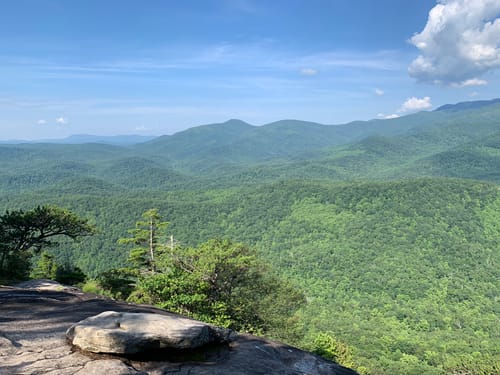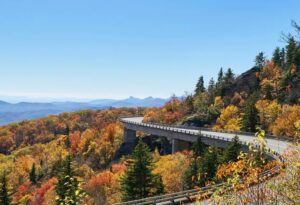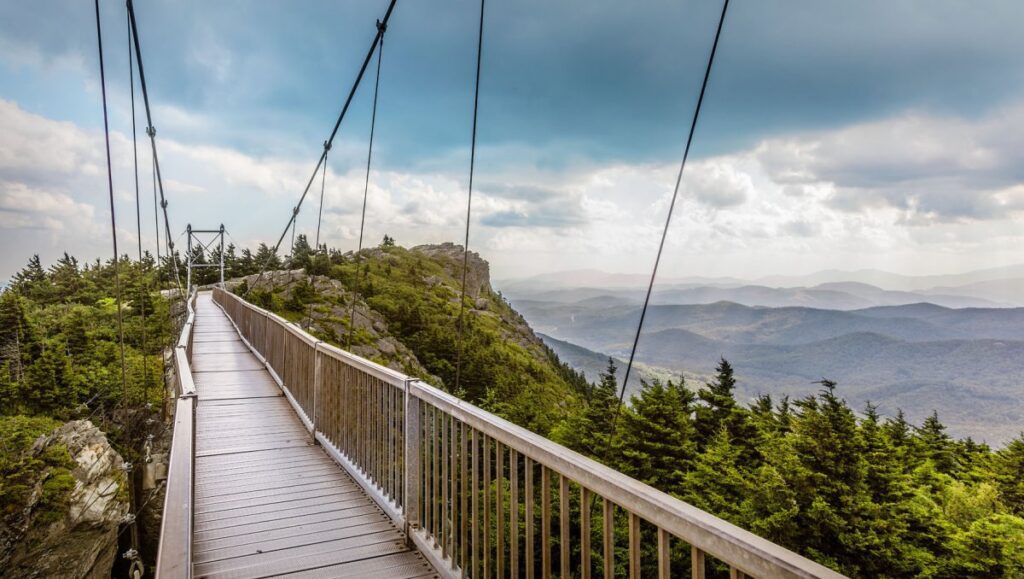
Nestled in the heart of Southern United States is the majestic and diverse landscape of North Carolina that draws in enthusiastic hikers from around the globe. Whether it’s the pristine coastal plains, the rolling hills of Piedmont, or the rugged mountains of Appalachia that catch your fancy, “Where Is The Best Hiking In North Carolina?” is here to be your guide. Your itch for adventure is going to be skillfully channeled as you navigate through some of the state’s most lush and scenic hiking trails, along the vibrant history, flora, and fauna that North Carolina generously offers. Brace yourself as we embark on this intriguing exploration of the best hiking North Carolina has in store!
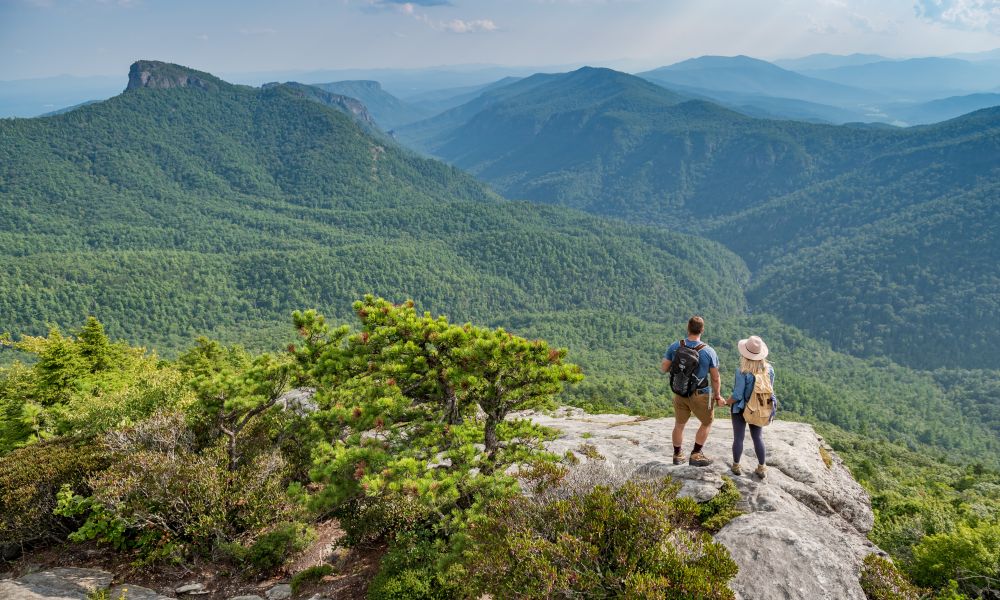
Overview of North Carolina’s Hiking Landscape
Located in the Eastern United States, North Carolina boasts a dynamic and diverse hiking landscape. Often, it’s described as a paradise, and rightly so. It’s a place where you are beckoned by the pristine beauty of the Appalachian Mountains, the allure of the Atlantic coastline, the magic of ancient forests, and the serenity of countless waterfalls. Whether you’re a seasoned hiker or a novice looking for a leisurely hike, there is a trail in North Carolina that promises an unforgettable experience.
Biodiversity in North Carolina
There’s a profound sense of life, vibrancy and energy in North Carolina’s wilderness. It’s a biodiversity hotspot with a stunning variety of habitats and ecosystems. From quaint maritime forests, swamp forests and hardwood species in the coastal region, to rich ecosystems like spruce-fir forests and deciduous woodland in the mountainous regions. Each habitat is home to a wide array of wildlife, with everything from black bears, deer and bobcats to countless bird species, reptiles and amphibians.
Different Terrain Types
North Carolina’s rich terrain diversity is a hiker’s dream. The state offers everything from sandy coastlines and flat, marshy landscapes in the east, to rolling hills filled with forests, rivers and farmland in the Piedmont region. Move westward, and you’re greeted with rugged mountaintops and deep, breathtaking gorges, presenting more challenging trails encompassing steep, rocky climbs and dense wilderness.
Seasonality for Hiking in North Carolina
In North Carolina, every season allows for a unique hiking experience. Spring unveils a blanket of flowering dogwoods, redbuds, rhododendrons and mountain laurels. The summer draws people with its lush greenery, while autumn showcases the state’s landscapes in spellbinding hues of red, orange, and gold. Even in winter, when a peaceful silence reigns, hiking in North Carolina can be just as magical as you trek through snow-dusted pathways.
Appalachian Trail
The Appalachian Trail, stretching over 14 states including North Carolina, is the poster child for long-distance hikes in the U.S.
General Information about the Appalachian Trail
This epic trail spans approximately 2,200 miles, 96 of which run along the North Carolina/Tennessee border. It’s marked with white blazes and offers a mix of challenges and chances to take in natural beauty that can’t be found anywhere else.
Key Points and Views of Appalachian in North Carolina
The North Carolina section boasts some spectacular views, particularly from Max Patch, a bald mountain renowned for its stunning 360-degree views, and Clingmans Dome, the trail’s highest point. The Roan Highlands, featuring the world’s largest natural rhododendron garden, is another highlight.
Tips and Tricks for Appalachian Trail Hikers in North Carolina
Invest in a good pair of hiking boots and pack lightweight, nutritious food. Always check the weather report before you depart, and hike with a buddy if possible.
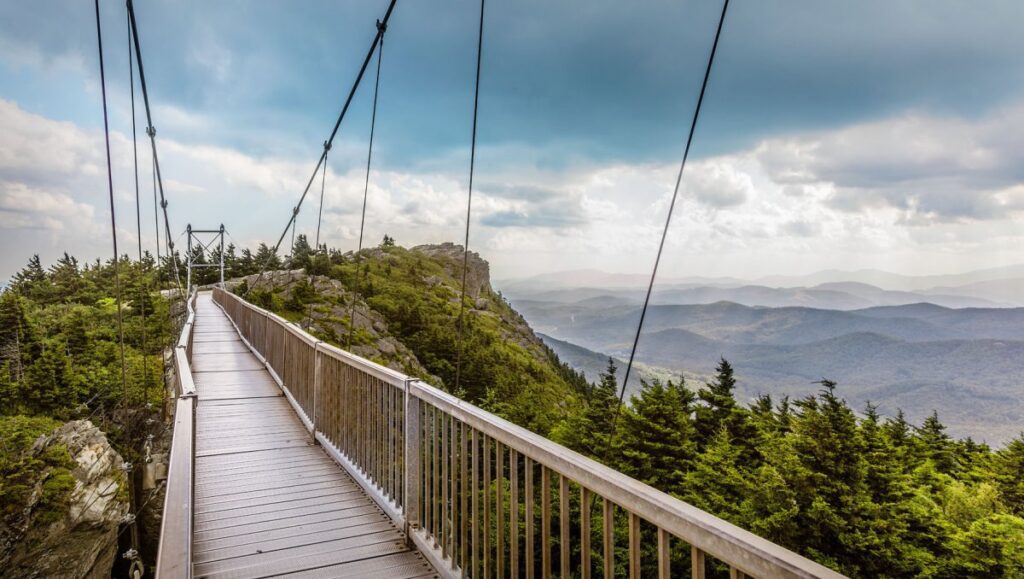
Blue Ridge Parkway
The Blue Ridge Parkway, often referred to as America’s “favorite drive,” offers more than just picture-postcard views.
History of Blue Ridge Parkway
Built during the Great Depression, the Parkway is a scenic driving route that stretches 469 miles from Shenandoah National Park in Virginia down to Great Smoky Mountains National Park in North Carolina.
Popular Hiking Routes in Blue Ridge Parkway
The Parkway holds countless hiking trails, but some popular ones include the Craggy Gardens trail, Graveyard Fields trail, and the Rough Ridge trail, all offering stunning vistas.
Flora and Fauna to see in Blue Ridge Parkway
Expect to find white-tailed deer, black bears, and wild turkeys amid a variety of deciduous and coniferous trees, wildflowers, and endless blueberry bushes.
Great Smoky Mountains National Park
One destination that brings together the diverse terrain and biodiversity of North Carolina is the Great Smoky Mountains National Park.
Why Visit Great Smoky Mountains National Park
Home to the majestic Smoky Mountains, this park offers stunning views, over 800 miles of trails, diverse wildlife, and a slice of human history with preserved Appalachian culture.
Trail Recommendations in Great Smoky Mountains National Park
You can hike the Appalachian Trail section, explore the beauty of Charlies Bunion, or enjoy the cascading waterfalls on the Rainbow Falls Trail.
Safety Measures in Great Smoky Mountains National Park
Always stick to marked trails and let someone know of your travel plans and estimated return time. Bear sightings are frequent, so read about bear safety, and carry bear spray for protection.
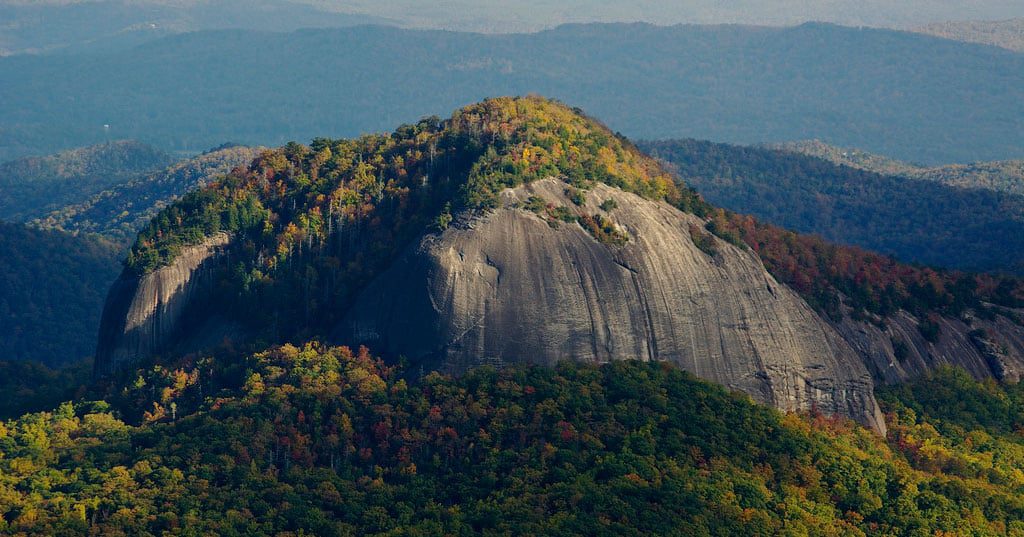
Umstead State Park
Umstead State Park near Raleigh offers a quiet retreat from city life.
Overview of Umstead State Park
This park includes over 5,000 acres of forest, filled with miles of hiking and multi-use trails, beautiful man-made lakes, and picnic spots.
Hikes to Consider in Umstead State Park
The Company Mill Trail and Sycamore Trail are popular among hikers for their tranquil beauty.
Facilities and Amenities in Umstead State Park
Park facilities include campsites, picnic areas, restrooms, and a visitor center.
Dupont State Forest
Dupont State Forest is quite popular among families and moviegoers.
Introduction to Dupont State Forest
This state forest in the Blue Ridge Mountains is known for its beautiful waterfalls, which have been featured in movies like “The Hunger Games.”
Highlight Hikes in Dupont State Forest
High Falls Loop and Triple Falls Trail will guide you to spectacular waterfalls.
Wildlife and Plants in Dupont State Forest
Deer, raccoons and a variety of bird species call this forest home, while the plant life includes gorgeous wildflowers and moss-covered trees.
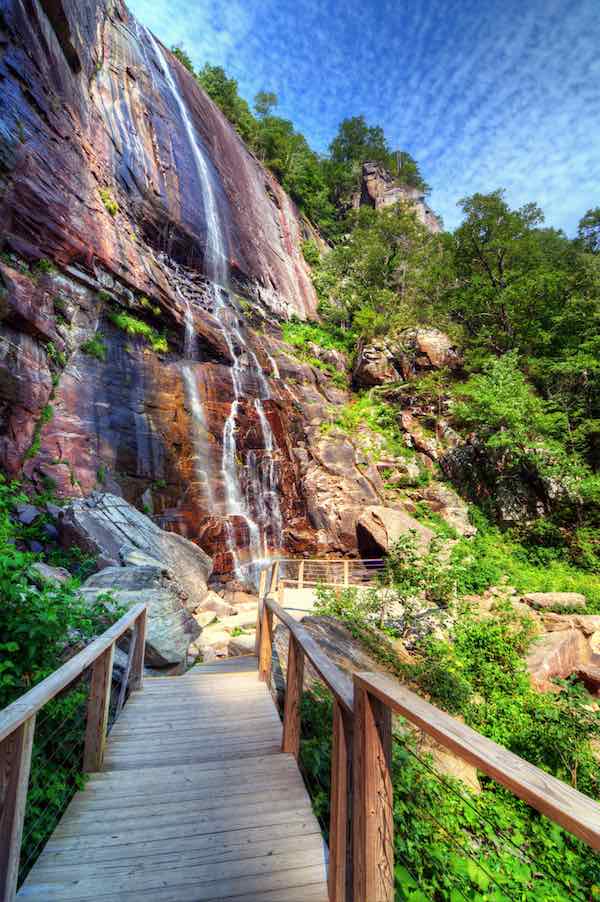
Linville Gorge Wilderness
Authoritative and mesmerizing, Linville Gorge Wilderness lures the adventurous at heart.
Exploring Linville Gorge Wilderness
Often referred to as the “Grand Canyon of the East,” it’s one of the most scenic and rugged gorges in the eastern United States.
Must-Try Trails in Linville Gorge Wilderness
The Linville Falls Trail features breathtaking waterfalls, while the Chimneys offer extraordinary rock formations and panoramic views.
Preparation for a Hike in Linville Gorge Wilderness
Pack plenty of water and snacks, use a map or GPS, and be prepared for steep, rugged trails.
Mount Mitchell State Park
Home to the highest peak in the eastern U.S., Mount Mitchell State Park is a hiker’s paradise.
All About Mount Mitchell State Park
This park offers an otherworldly experience with its spruce-fir forest often bathed in clouds or snow.
Best Hiking Trails to Explore in Mount Mitchell State Park
Take the Mount Mitchell Trail to stand on the highest point east of the Mississippi or explore Balsam Nature Trail for a leisurely walk.
Camping and Other Activities in Mount Mitchell State Park
Besides hiking, the park also offers camping, picnicking, and a museum.
Pisgah National Forest
Pisgah National Forest is a hidden gem in North Carolina’s wilderness precincts.
The Unique Landscape of Pisgah National Forest
This forest’s landscape is deeply dissected with numerous rock formations, old-growth forests, goosebump-inducing waterfalls, and high-altitude peaks.
Top Hiking Routes in Pisgah National Forest
Hike to the peak of the Looking Glass Rock for a rewarding view, or take the Pink Beds Loop for a relaxing experience.
What to Know Before You Go to Pisgah National Forest
Bring a map, pack insect repellant, and note that while it is popular amongst locals, it is less developed, so it demands greater self-sufficiency from hikers.
A Comprehensive List of the Best Hiking Spots in North Carolina:
- Great Smoky Mountains National Park – Part of the Appalachian Trail, with over 800 miles of trails. Highest peak is Clingmans Dome at 6,643 feet. Popular trails include Charlies Bunion, Alum Cave Trail, and Chimney Tops.
- Blue Ridge Parkway – 469 mile scenic drive with hundreds of trailheads and paths to waterfalls, peaks and overlooks. Notable hikes include Crabtree Falls, Linville Falls and Graveyard Fields.
- Appalachian Trail – Runs 2,190 miles from Georgia to Maine, with 96 miles passing through the Nantahala National Forest in NC. Max Patch and Roan Mountain are highlights.
- Pisgah National Forest – Over 500,000 acres with 1,000 miles of trails. Contains waterfalls like Looking Glass Falls, mountain summits like Mt. Pisgah and old-growth forests.
- DuPont State Forest – 10,000 acres with nearly 100 miles of trails and waterfalls like Triple Falls, High Falls and Bridal Veil Falls. Stairs and bridges allow access.
- Chimney Rock State Park – Iconic 315 foot tall granite monolith. Hike to the summit or see views from the Chimney Rock attraction. Hickory Nut Falls is also located here.
- Hanging Rock State Park – Diverse trails with waterfalls, cascades and the namesake massive cliff with views. Popular routes are the Lower Cascades Trail and Moore’s Wall Loop.
- Stone Mountain State Park – Central NC park with 20+ miles of trails to 600 ft. Stone Mountain summit and other granite outcroppings. Waterfalls like Widow’s Creek Falls.
- Linville Gorge Wilderness – Massive 12,000 acre gorge with steep trails descending 2,000 feet. Hawksbill and Table Rock Mountains offer panoramic views.
- Pilot Mountain State Park – Distinctive knob-shaped quartzite mountain in the Piedmont region with a 2 mile hiking trail to the summit.
- Lake James State Park – Trails around the 6,500 acre lake including the Overmountain Victory Trail and Fox Den Loop. Mountains and forests surround the blue waters.
- South Mountains State Park – High elevation trails to waterfalls and peaks across 40+ miles in the Foothills region, including 80 ft. High Shoals Falls.
- Crowders Mountain State Park – Rugged hiking up Crowders Mountain and Kings Pinnacle via steep trails and staircases. Iconic peaks to climb near Charlotte.
- Eno River State Park – Trail system along the lush Eno River in Durham. Hike to waterfalls or walk along the river at spots like Pump Station and Fews Ford.
- Mount Mitchell State Park – Highest peak east of the Mississippi at 6,684 ft. Climb via the strenuous 7 mile Mt. Mitchell Trail or drive up.
- Elk Knob State Park – Hike up Elk Knob Summit at 5,520 feet for sweeping views. 1.9 mile roundtrip hike via switchbacks and wooden steps.
- Raven Rock State Park – Follow the hiking trails along the Cape Fear River and see unusual rock formations and small waterfalls in the Sandhills region.
- Carolina Beach State Park – Coastal hiking on 5+ miles of woodland trails. See live oak trees, carnivorous plants in the marsh and birdwatch.
- Weymouth Woods-Sandhills Nature Preserve – Trails through unique sandhills habitat with longleaf pine forests, wildflowers and rare plants.
Some Basic Tips for Hiking in North Carolina
Packing for a Hike
Always pack smartly. Carry plenty of water, high-energy snacks, first aid supplies, a map or a GPS device, a flashlight, rain gear, and a whistle.
Trail Etiquette in North Carolina
Follow the ‘Leave No Trace’ principles, such as leaving what you find, respecting wildlife, and being considerate of other visitors.
Safety and Emergency Preparedness
Always check the weather forecast before your hike. Ensure someone knows where you are going and when you are expected back. Learn basic first aid, pack emergency supplies like a GPS navigation device, proper clothing, extra snacks/food, and keep to designated or marked trails. Happy Hiking!
